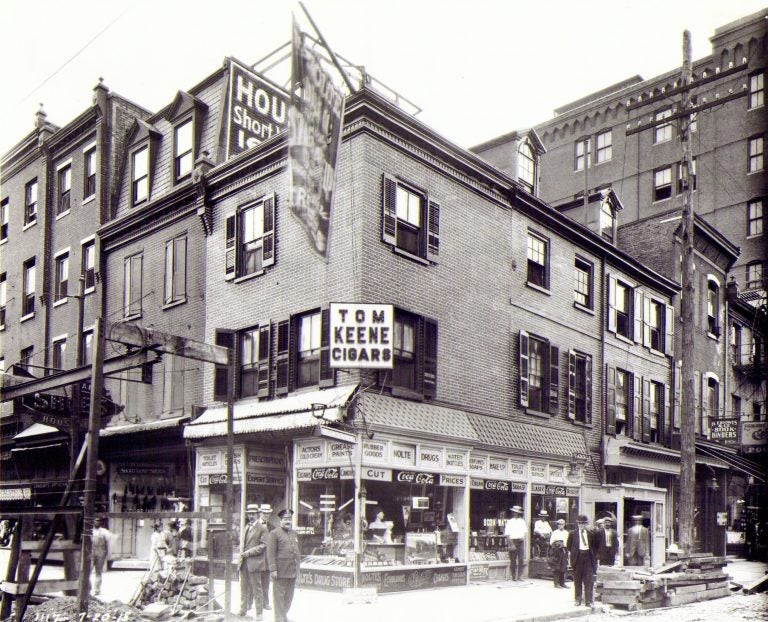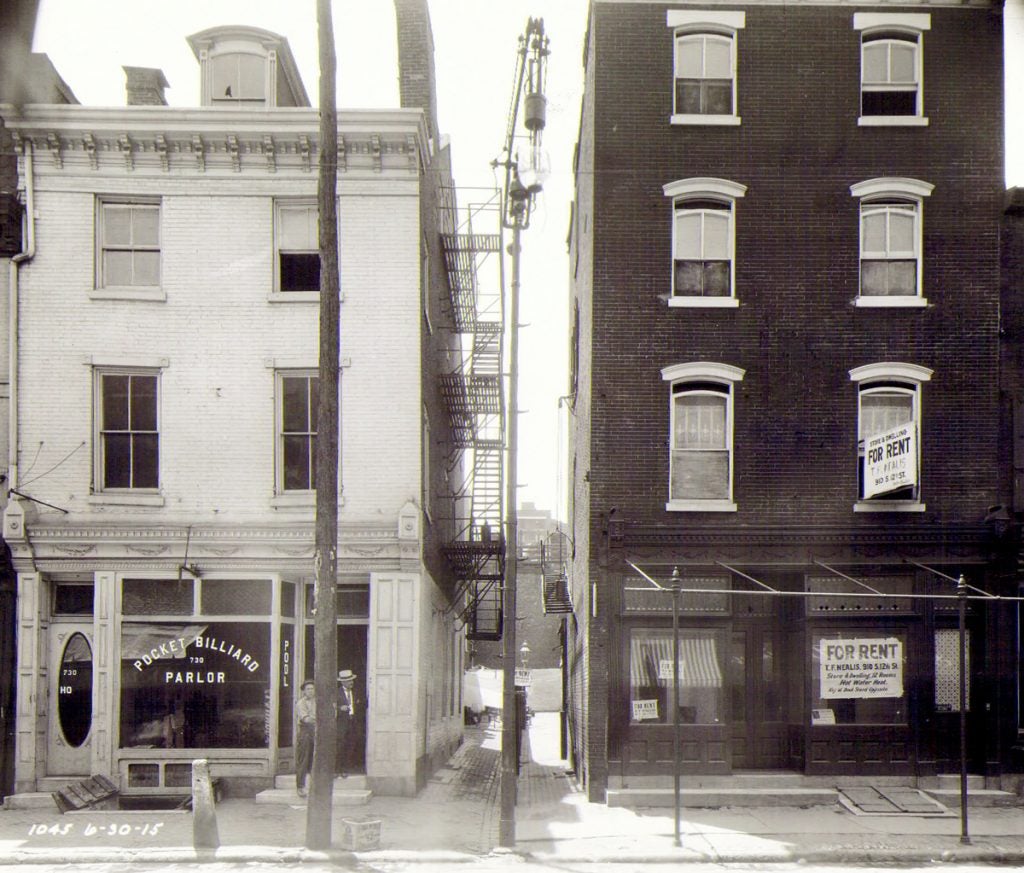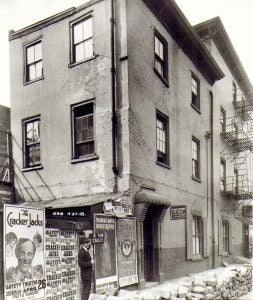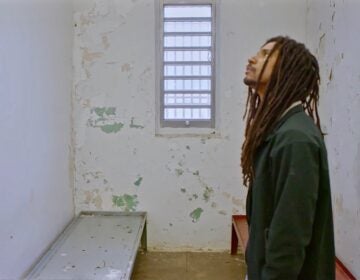Local history: Learn about Philadelphia’s seedy, beloved Tenderloin – May 17 & June 3, 2018
Back in the 1800s, 'tenderloin' was a common moniker for a city's vice districts and skid rows. Where was Philly's Tenderloin, and what was it like?

The corner of 8th and Race streets in Philadelphia, 1915. (Courtesy of PhillyHistory.org)
- Thursday May 17, 6 – 9 p.m.
- The Trestle Inn, 339 N. 11th St., Philadelphia
- Tickets: $25, includes a cocktail (21 and up)
Exploring David Lynch’s Eraserhood
- Sunday June 3, 1 – 2:45 p.m.
- Vacant lot at the corner of 13th and Wood streets
- Tickets: $10 for students, $15 for Hidden City members, $20 for the public
One of my first weeks living in Philadelphia, I wandered north of Center City into a bar on Spring Garden and asked what neighborhood I was in. The bartender leaned in conspiratorially.
“Well,” he said, “if you were from here, you might call it Spring Garden or Callowhill. If you were a developer, you’d call it the Loft District. And if you were a hipster” — here I felt a little judged — “you’d call it the Eraserhood.”

It turns out this neighborhood, north of Chinatown but south of North Philly, once had another name: the Tenderloin. It’s a title now most associated with a San Francisco neighborhood, but, back in the 1800s, Tenderloin was a common moniker for vice districts and skid rows. Local historian Annie Anderson says it may have come from the cynical recognition that neighborhoods like this offered “prime cuts” for everyone: sex, drugs, and gambling for the working class; graft and bribery for the police.
Thursday, Anderson will shed some light on the history of Philadelphia’s own Tenderloin in a talk at The Trestle Inn, a bar at the heart of the old vice district. She’ll be sharing maps, photos, and newspaper clippings from a time when this neighborhood was filled with vaudeville and pool halls, brothels, and opium dens.

“As a historian, I’m always trying to get people to see beyond the Colonial and Revolutionary history of Philadelphia,” says Anderson, who has written a book on organized crime in Philly and serves as manager of research and public programming at Eastern State Penitentiary.
If that talk doesn’t satisfy your curiosity about this amorphous neighborhood, you can catch a walking tour of the “Eraserhood” early next month.
That name is drawn from “Eraserhead,” a film by David Lynch, who was a student at the Pennsylvania Academy of the Fine Arts and lived in the neighborhood in the 1960s. Several of his unsettling, surrealist films feature Callowhill’s decrepit factories and abandoned lots. Lynch has said he was inspired — and disturbed — by the Philadelphia he knew then. “The fear, insanity, corruption, filth, despair, violence in the air was so beautiful to me,” he told reporters in 2014. “It gave me a lot of ideas.”
On June 3, Hidden City’s Peter Woodall and Bob Bruhin, a Lynch aficionado, are giving a 90-minute walking tour of Lynch’s Philadelphia. Attendees will meet guides at the vacant lot at the corner of 13th Street and Wood Street, where Lynch lived.
This article is part of a new effort recommending things to do in the Philly region. Tell us what you think.
WHYY is your source for fact-based, in-depth journalism and information. As a nonprofit organization, we rely on financial support from readers like you. Please give today.





